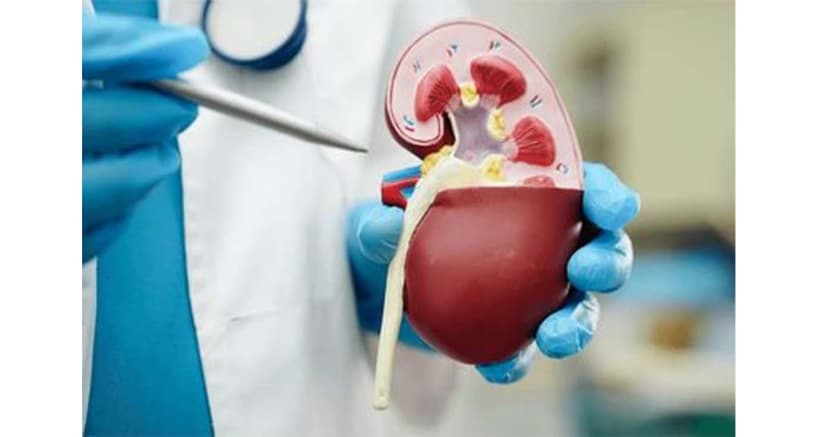Understanding Urinary Tract Infections: Causes, Symptoms, and Prevention
By:

Apex Hospitals
21-07-2023 5 Min Read

Urinary tract infections (UTIs) are a common health issue affecting millions worldwide. These infections occur when bacteria enter the urinary tract, leading to inflammation and discomfort. The kidneys, ureters, bladder, and urethra comprise the urinary system. The bladder and urethra are the most commonly infected parts of the urinary tract.
Understanding UTIs is essential for both men and women, as they can cause significant discomfort and lead to more severe complications if left untreated. Women are more likely than men to have a UTI. An infection that is restricted to the bladder can be uncomfortable and irritating. However, if a UTI spreads to the kidneys, it can cause significant health concerns.
What are the Common Causes of UTIs?
Various factors can cause UTIs, the most common being bacteria entering the urinary tract through the urethra. The anus is next to the urethra, the tube that transports urine from the bladder to the body's exterior. Bacteria from the large intestine, such as E. coli, can sometimes enter the urethra through the anus. They can then migrate up to your bladder and, if the infection isn't treated, can infect your kidneys. UTIs are one of the main reasons doctors advise women to wipe from front to back after using the bathroom.
Other factors that can increase the risk of UTIs include:
- sexual activity
- improper hygiene
- urinary catheter use
- genes: Others are more likely to become infected because of the form of their urinary tracts
- Previous UTI
- pregnancy
- Diabetes: Women with diabetes may be more vulnerable since their immune systems are weaker, making them less able to fight infections.
- Other health conditions include multiple sclerosis, kidney stones, stroke, and spinal cord injury.
Additional risk factors for men
- An enlarged prostate
Other risk factors for women
- Shorter urethra: Women's urethras are more straightforward than men's. This makes bacteria more likely to enter their bladders.
- Sexual activity: During penetrative intercourse, pressure on the female urinary tract can transport bacteria from the anus into the bladder. Bacteria can be introduced into the urethra by oral intercourse, increasing the risk of infection. Peeing after intercourse may help lower infection risk.
- Spermicides: Spermicides may increase the risk of UTI by disrupting the vaginal microbiome.
- Use of condoms during sex: non-lubricated latex condoms may cause skin irritation and friction during sexual intercourse. This may raise the likelihood of a UTI. However, there are numerous reasons to wear condoms. They are critical in avoiding undesired pregnancy and decreasing the spread of sexually transmitted diseases (STIs). Use enough water-based lubricant during intercourse to help minimise friction and skin irritation caused by condoms. Avoid using spermicide-coated condoms.
- Diaphragms
- Decrease in the level of oestrogen
Understanding the Symptoms of UTIs
Recognizing the UTI tract infection symptoms is crucial in seeking timely treatment. Common symptoms of UTIs include:
- a frequent urge to urinate
- a burning sensation during urination
- cloudy or strong-smelling urine
- pelvic pain
- fever
- lower back pain
It is important to note that symptoms can vary depending on the age and gender of the individual affected.
UTI Symptoms in Females: How Are They Different?
UTI symptoms can differ between males and females due to anatomical differences. In females, the proximity of the urethra to the anus makes it easier for bacteria to enter the urinary tract, increasing the risk of infection. Female-specific UTI symptoms may include:
- pelvic pressure
- frequent urination
- discomfort during sexual intercourse
Females must be aware of these symptoms and seek medical attention promptly to prevent the infection from spreading to the kidneys.
Diagnosing a UTI: What Tests are Involved?
To diagnose a UTI, healthcare professionals may perform various tests.
- A urine culture is commonly used to identify the presence of bacteria in the urine. This test involves collecting and analysing a urine sample in a laboratory to determine the type of bacteria causing the infection.
- A urinalysis may be conducted to check for the presence of white blood cells, red blood cells, and other indicators of infection.
These tests help healthcare providers determine the appropriate treatment plan for UTIs.
The Role of Bacteria in UTIs
Bacteria play a significant role in the development of UTIs. As mentioned earlier, E. coli is the most common bacteria responsible for UTIs. However, other bacteria can also cause these infections. When bacteria enter the urinary tract, they can attach to the lining of the bladder or urethra, multiply, and cause inflammation. This leads to the characteristic symptoms of UTIs. Understanding the role of bacteria in UTIs can help develop effective treatment strategies.
Treatment Options for Urinary Tract Infections
- Antibiotics: Antibiotics are the most common form of treatment for UTIs. These medications work by killing the bacteria causing the infection. The antibiotic choice depends on the infection's severity, the type of bacteria involved, and the individual's medical history. It is vital to complete the entire course of antibiotics as prescribed by the healthcare provider to ensure the complete eradication of the infection.
- Drinking plenty of water can help flush the bacteria out of the body.
- Using heating pads and taking over-the-counter pain relievers can help soothe the pain.
- Drinking Cranberry juice can also prevent or treat UTIs.
Medications for UTIs: What You Need to Know
Following the healthcare provider's instructions is essential when prescribed antibiotics for a UTI. Some key points to remember include taking the medication at the recommended times, completing the full course of antibiotics, and avoiding alcohol while on medication. Awareness of potential side effects such as nausea, diarrhoea, and allergic reactions is also essential. If any unusual symptoms or severe side effects occur, it is crucial to contact a healthcare professional immediately.
Preventing UTIs: Tips and Strategies
Prevention is always better than cure when it comes to UTIs. There are several steps you can take to reduce your risk of developing a urinary tract infection, such as:
- practicing good hygiene, such as wiping from front to back after using the toilet
- staying hydrated
- urinating before and after sexual activity
- avoiding irritating feminine products
- wearing breathable cotton underwear
- Avoid tight-fitting clothing
Maintaining a healthy lifestyle, including a balanced diet and regular exercise, supports overall urinary health.
Urinary tract infections can be uncomfortable and lead to more severe complications if left untreated. You can take control of your urinary health by understanding the causes, symptoms, and prevention strategies for UTIs. If you experience any symptoms of a UTI, it is crucial to seek medical attention promptly. Remember to follow your healthcare provider's instructions for treatment and take preventive measures to reduce your risk of future infections. You can lead a comfortable and infection-free life by prioritising your urinary health.
Related Articles
Connect With Us
Health In A Snap, Just One App.
KNOW MORE




































































































